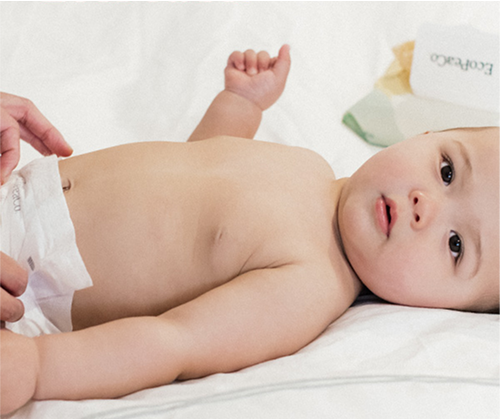As new parents, the excitement of cradling your newborn is often accompanied by a touch of nervousness. It's natural to feel this way; you want to ensure your baby feels safe, comfortable, and secure in your arms. Learning how to hold a newborn is a fundamental aspect of parenting, and it sets the stage for nurturing physical contact that is crucial for your baby's development. When you first hold your newborn, you begin a journey of love, trust, and connection that will last a lifetime.
Essential Newborn Holding Techniques
Now that you’re ready to embark on this beautiful journey of parenthood let’s delve into some essential newborn-holding techniques that will empower you to cradle your bundle of joy confidently. Whether you opt for the classic cradle hold, the supportive shoulder hold, or the cozy football hold, each position offers its unique blend of comfort and intimacy.
- Cradle hold: This timeless classic involves cradling your baby's head in the crook of one arm while supporting their bottom with the other. This hold provides a secure and comforting environment for your baby, allowing for gentle swaying and soothing that mimics the sensations of being in the womb.
- Shoulder hold: Perfect for burping your baby after feeding and promoting digestion, the shoulder hold involves positioning your baby upright against your shoulder, supporting their bottom with one hand and gently patting or rubbing their back with the other. The shoulder hold is a go-to move for reducing discomfort from trapped gas.
- Football hold: Ideal for breastfeeding or calming a fussy baby, the football hold entails tucking your baby under your arm like a football, with their head resting in the palm of your hand and their body along your forearm.
Crucial tip: Always support your baby's head and neck when holding them, as their delicate muscles are still developing.
Safety First: Tips for Holding Your Baby
While the joy of holding your newborn is unparalleled, it's essential to prioritize safety above all else. Ensuring your baby is properly supported and secure in your arms is paramount to their well-being. Here are some vital safety tips to keep in mind:
- Proper hand placement: Always support your baby's head and neck with one hand while cradling them, ensuring that their head is cradled in the crook of your arm and their neck is supported by your hand. Use your other hand to support their bottom and ensure they are snugly held against your body.
- Stability and balance: Maintain a firm grip on your baby's body to prevent accidental slips or falls. Ensure that your arms and hands are positioned securely around your baby, especially when transitioning between holding positions or moving around.
- Gentle movements: Avoid sudden movements or jerks that may startle your baby. Instead, move slowly and gently when changing positions or transferring your baby from one caregiver to another. This helps your baby feel secure and prevents unnecessary discomfort.
- Look around the environment: If you’re walking with your baby while holding, be aware of potential hazards in your environment. Avoid areas where you may slip or trip over things while walking with your baby in tow.
- Check for obstructions: Ensure that your baby's face is not obstructed by clothing or blankets while holding them. Keep a close eye on their breathing and monitor for any signs of discomfort or difficulty in breathing. Avoid covering your baby's face with fabric or placing them in positions where their airway may be compromised.
- Temperature regulation: Pay attention to the ambient temperature and dress your baby appropriately for the weather. Opt for lightweight, breathable clothing in warmer weather and avoid excessive bundling to prevent overheating. Conversely, layer your baby with warm clothing and blankets in colder weather to maintain a comfortable body temperature.
- Secure surfaces: Always place your baby on a secure and stable surface when not being held, such as a flat, firm mattress in a crib or bassinet. Avoid placing your baby on elevated surfaces such as sofas or beds without supervision, as they may roll or fall.
- Supervision and awareness: Never leave your baby unattended when they are being held, especially on elevated surfaces or in the vicinity of hazards such as stairs or sharp objects. Stay vigilant and aware of your baby's movements and needs at all times.
By adhering to these safety guidelines, you can ensure that every moment spent holding your baby is a safe, secure, and cherished experience for you and your little one. Remember, your baby's safety is always the top priority, and taking proactive measures to protect them is essential to parenting.

Bonding Through Touch: The Emotional Benefits
Physical contact between parents and newborns is more than just a practical necessity – it is vital in nurturing emotional bonds and supporting your baby’s overall well-being. The gentle pressure of your touch, the rhythmic beat of your heart, and the warmth of your embrace create a sense of security and belonging essential for your baby's emotional development.
- Skin-to-skin contact: Embrace the power of skin-to-skin contact, known as kangaroo care, which involves holding your baby against your bare chest. This intimate bonding promotes feelings of safety, warmth, and security, regulates your baby's body temperature and heart rate, and enhances breastfeeding success.
- Responsive parenting: By responding promptly to your baby's cues and needs through physical touch, you tell them they are loved, valued, and understood. Whether holding your baby when they cry, gently stroking their back during feeding, or cuddling them to sleep, your touch provides reassurance and comfort in moments of distress and uncertainty.
- Emotional regulation: Physical touch profoundly impacts your baby's emotional regulation and stress response. The soothing rhythm of your heartbeat, the gentle sway of your movements, and the comforting pressure of your embrace help regulate your baby's emotions, reducing cortisol levels and promoting feelings of calmness and security.
- Bonding rituals: Establishing bonding rituals through touch, such as massage, baby yoga, or bedtime snuggles, creates opportunities for meaningful connection and intimacy between parent and child. These rituals deepen the bond between you and your baby and provide a sense of predictability and stability in their daily routine.
- Parental confidence: As you become more attuned to your baby's cues and responses through physical touch, you'll gain confidence in your parenting abilities and instincts. Trusting in the power of your touch to comfort, nurture, and communicate with your baby strengthens your bond and fosters a deep sense of connection and attachment.
Incorporating these practices into your daily interactions with your baby fosters a nurturing environment where love, security, and trust flourish. Remember, every gentle caress, every tender hug, and every loving touch is a testament to the unbreakable bond between parent and child, shaping a lifetime of love and connection.
Addressing Common Concerns and Fears
Navigating the joys and challenges of parenthood comes with several concerns and fears along the way. From soothing a fussy baby to adapting to warm weather conditions, here are some practical tips and solutions to address your worries:
- Soothing a fussy baby: Experiment with different holding positions and gentle rocking motions to soothe your baby's cries. Sometimes, simply holding your baby close and speaking softly can work wonders in calming them down. Additionally, try using white noise machines or gentle lullabies to create a soothing environment for your little one.
- Feeding challenges: If you're struggling with breastfeeding or bottle-feeding, don't hesitate to seek support from lactation consultants or pediatricians. Proper positioning while holding your baby during feeding sessions can make a world of difference in ensuring successful and comfortable feedings for both you and your baby.
- Holding techniques as your baby grows: You may wonder if there are changes to holding your baby at three months compared to the newborn stage. Your baby will have more head control and muscle strength at this stage, allowing for new holding interactions. Consider experimenting with upright holds, such as a hip carry or facing-outward position in a baby carrier, to accommodate your baby’s growing curiosity and desire to explore the world around them.
- Carrying in warm weather: As temperatures rise, keeping your baby comfortable and cool while holding them is essential. Opt for lightweight, breathable clothing made from natural fibers such as cotton to prevent overheating. When outdoors, seek shade and use lightweight blankets or stroller covers to shield your baby from direct sunlight. Remember to stay hydrated and monitor your baby for signs of overheating, like flushed cheeks or fussiness.
- Colic and gas relief: If your baby is experiencing colic or gas discomfort, consider gentle tummy massage techniques or utilizing gas-relief products recommended by your pediatrician. Holding your baby upright after feedings can also help alleviate gas buildup and discomfort.
Key Insights:
With these essential tips and techniques, you can master the art of holding your newborn with confidence and grace. Remember, every embrace is an opportunity to nurture, comfort, and cherish the precious bond between parent and child. Happy holding!


